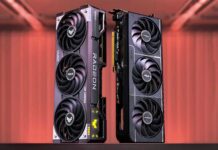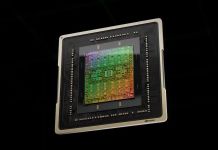VIA has so finally unleashed its new microarchitecture code-named Isaiah. The processor series based on the Isaiah architecture will be known as Nano and according to VIA, Nano offers up to four times the performance of previous VIA processors, while still staying in the same power envelope. Nano is also pin-compatible with the current C7 series, which should ensure a smooth and friction-free transition for partners and OEMs.
Isaiah is an x86 64-bit, superscalar, speculative out-of-order architecture and is actually VIA’s first real mainstream desktop processor. While it’s certainly not meant to compete with Intel’s or AMD’s desktop processors, it will go to battle with Intel’s Atom series.
“VIA Nano processors represent the next generation of x86 technology, providing the fundamental building blocks for a new genre of optimized computing solutions,” said Wenchi Chen, President and CEO, VIA Technologies, Inc. “‘Small is Beautiful’ is more than a design strategy; it’s our vision of where the PC market is heading and our new processors will help the market realize that dream.”
The Nano processors will be made by Fujitsu using its 65nm process and the whole nanoBGA2 package measures a mere 441mm². Each Nano processor comes with 1MB L2 cache and the first models will be as shown by the table below;
| Model Name | Clock Speed | VIA V4 Bus | Maximum Power (TDP Max) | Idle Power |
| Nano L2100 | 1.8GHz | 800MHz | 25W | 500mW |
| Nano L2200 | 1.6GHz | 800MHz | 17W | 100mW |
| Nano U2400 | 1.3+GHz | 800MHz | 8W | 100mW |
| Nano U2500 | 1.2GHz | 800MHz | 6.8W | 100mW |
| Nano U2300 | 1.0GHz | 800MHz | 5W | 100mW |
| We’re aware that the model numbering looks a bit odd, but this is how they were presented | ||||
There is a number of features VIA highlights in its press relase;
And as always point out the encryption capabilities of its processors, something which the competition lacks;
| AMD Phenom | Intel Core 2 | Intel Atom | VIA C7 | VIA Nano | |
| Secure Hash | No | No | No | Full SHA-1 & SHA-256 | Full SHA-1 & SHA-256 |
| Buffer Overflow | NX Bit | NX Bit | NX Bit | NX Bit | NX Bit |
| On-Die Encryption | No | No | No | Full AES en/decryption RSA acceleration CBC, CFB-M, AC, CTR modes 25Gb/s peak | Full AES en/decryption RSA acceleration CBC, CFB-M, AC, CTR modes 25Gb/s peak |
| Random Number Generation (RNG) | No | No | No | 2 Enhanced Hardware RNGs up to 12Mb/s Feeds output to SHA engine | 2 Enhanced Hardware RNGs up to 12Mb/s Feeds output to SHA engine |
Isaiah’s strength is of course its performance per watt ratio, more than its raw computing power. Even though it features a number of things not even available with competing processors, the numbers is what’s going to attract new partners. VIA has submitted comparisons with both Celeron-M 520 (1.6GHz) and VIA C7 to show off the power of Nano;
- Performance statistic based on overall score on OfficeBench 2007
- TDP for 1.6GHz Celeron-M = 31 watts; TDP for 1.6GHz VIA Nano = 17 watts
- OS = Windows Vista Enterprise
Last but certainly not least we’ve come across this block diagram of the Isaiah architecture for those of you who are a bit more tech-savvy.


















